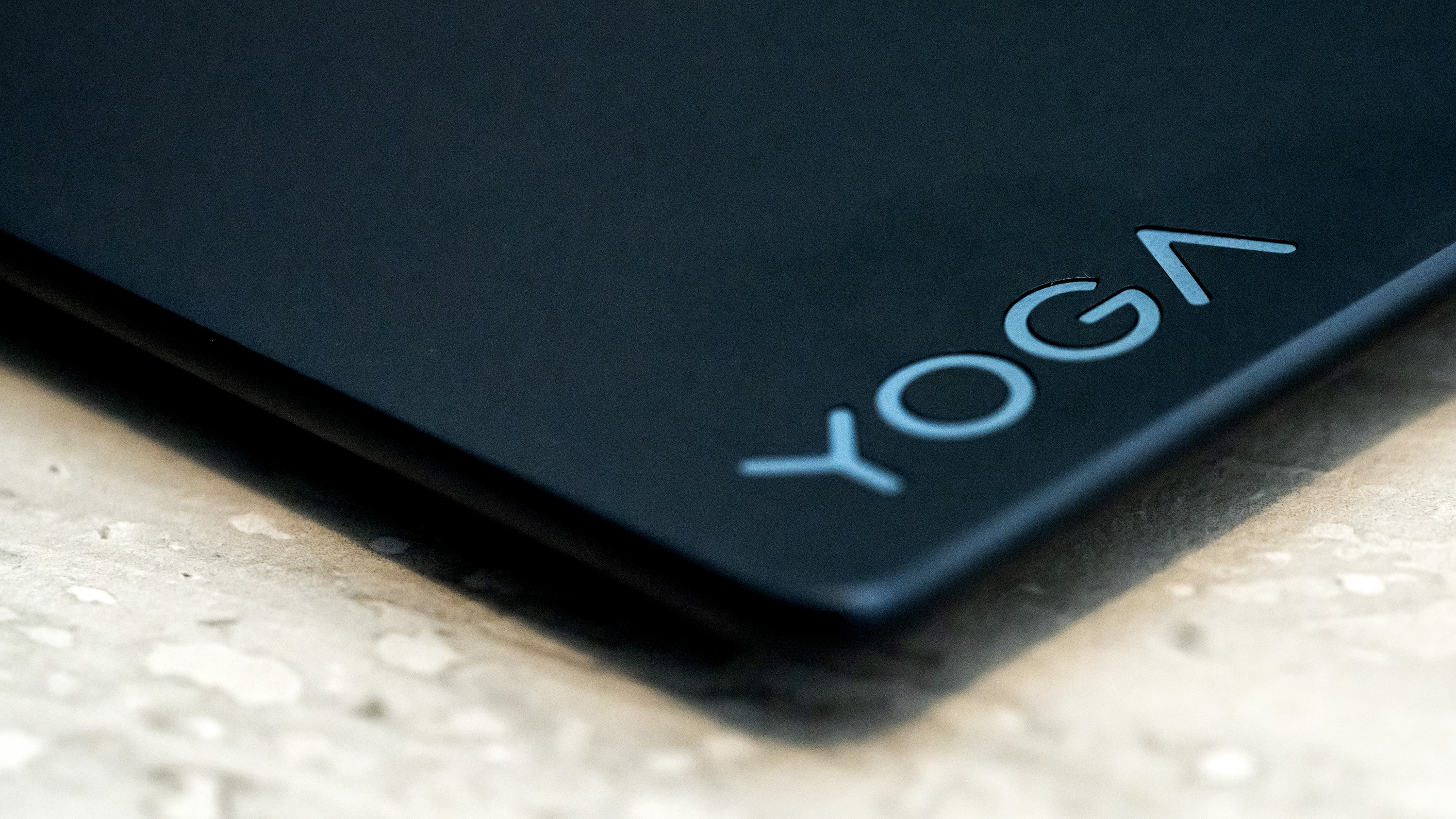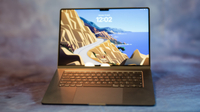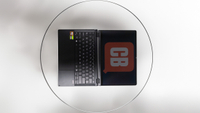Our Verdict
The Lenovo Yoga Slim 7x is a slim machine that’s keenly priced, but its graphics performance is wanting. The OLED screen is bright and attractive, and it follows in the trend of Windows laptops suddenly sporting near-MacBook battery life, plus it's really lightweight and beautifully designed. The Snapdragon processor shows lots of promise for Qualcomm's invasion into the PC space, but the integrated graphics limit the upside a bit for creative pros with high processing demands.
For
- Long battery life
- Decent performance
- Thin and light
Against
- Integrated graphics only
- Slim port selection
- Copilot+ still underwhelming
Why you can trust Creative Bloq
Snapdragon laptops are well and truly here, and following our review of the Microsoft Surface Laptop 7 we’ve cracked open the lid of another machine running the ARM-adjacent processor, this time from Lenovo. It features the same 12-core chipset as Microsoft’s laptop, but in a smaller frame and with a 2-in-1 form factor that means you can turn it into a pseudo-tablet, along with less RAM and fewer ports along the outside.
It’s a well-priced laptop, the version we tested has 16GB of RAM and a 1TB SSD, and you can drop the price a bit if you settle for 512GB of storage. That stands up well against competitors from Apple and Microsoft, making this Copilot+ PC an interesting new addition to the pantheon, making it a worthy contender for place among our best laptops for photo-editing.

| CPU | Qualcomm Snapdragon X Elite (12-core) |
| GPU | Qualcomm Adreno |
| NPU | Qualcomm Hexagon |
| RAM | 16GB LPDDR5X |
| Screen | 14.5in HDR OLED touchscreen |
| Resolution | 2944 x 1840 px |
| Refresh rate | 90Hz |
| Colour coverage (stated) | 100% P3 |
| Storage | 1TB SSD |
| Connectivity | Wi-Fi 7, Bluetooth 5.3, 3x USB4 Type-C |
| Dimensions | 325 x 225 x 13mm |
| Weight | 1.28kg |
Design & build
The 2024 Yoga Slim 7x lives up to its name. Not the Yoga bit, as while it has a bendy 2-in-1 hinge that turns it into a tablet-alike it completely fails to achieve the downward dog position, but it sure is slim. Part of this can be attributed to the OLED screen, as this display technology requires fewer layers to create and so can produce a more slender result, but the other half of the chassis isn’t exactly chunky either. Lenovo has done a good job of cramming everything in, though as a result there are only three ports and they’re all the same.
They’re the endlessly adaptable USB4 Type-C ports, however, so it’s not a great loss for the HDMI and Ethernet sockets to be missing as adapters are easy to come by, USB-C monitors are plentiful, and who needs Ethernet anyway when you have Wi-Fi 7? OK, that last one might be questionable, but docking stations are easy enough to find if you’re deskbound, and the sleek simplicity of the Type-C port was made for machines like this. We always like to see a wired audio socket though, we’re old-fashioned like that, and were pleased to see that a USB-C adapter was provided in the box with 3.5mm, USB-A, HDMI and VGA connectors on it. A 65W USB-C charger is supplied too, and the Yoga was happy to fill its tanks from a 60W tablet charger, despite complaining that it was ‘slow’.
The Yoga is stiff rather than flexible and comes in a striking shade of dark blue as its only colour option. What’s also notable is the top of the screen, where the otherwise thin bezel bulges up into a small fingerhold above the (1080p) webcam that makes opening it up easier. The power button is on the side, joined by a switch that disables the webcam, but the PC starts up when you open the lid, displaying a classy Yoga logo as it does so.

Features
As a Copilot+ PC you will of course find the Copilot button on the keyboard, which is a completely standard model with large keys that aren’t crammed in too tightly and have a soft white backlight. There's no numpad, and the benefit of this is that room has been found for two speakers by the sides of the keys.
The Copilot features are nice to have, but have so far failed to prove themselves to be unmissable reasons to buy a laptop. Instead, what you’ll be attracted to here is its excellent OLED touchscreen (a stylus in the box would have been nice) and all-day battery life.

The keys are nice to type on, with a decent amount of resistance even if the thin chassis doesn’t allow much travel, and the trackpad that sits below them is smooth and easy to click on, even if we have seen larger ones.
Battery life is remarkable for such a slender machine. At nearly 12 hours with the screen on and a preprogrammed loop of Office applications running, it managed to stay awake for almost 12 hours before succumbing to low power, an excellent result. It beats the Surface Laptop 7 in the same test, even though that machine is thicker, and you'll easily get all-day use out of it with power to spare.
Performance
| Cinebench 2024 | Row 0 - Cell 1 |
| Single core | 108 |
| Multi-core | 999 |
| GPU | not compatible |
| Geekbench 6 | Row 4 - Cell 1 |
| Single core | 2469 |
| Multi-core | 13604 |
| GPU (OpenCL) | 20655 |
| PCMark 10 | Row 8 - Cell 1 |
| Applications | 12991 |
| Battery | 11h 46m |
| 3D Mark Time Spy | Row 11 - Cell 1 |
| Graphics | 1705 |
| CPU | 4302 |
| Handbrake video encoding | 5m 01s, 64fps |
In the benchmark tests, we can see the Lenovo implementation of the Snapdragon X Elite posting ever so slightly higher scores than Microsoft’s in Geekbench 6, though there’s only about a two per cent difference, but coming in 37 per cent behind the Surface in the PC Mark Applications test, which uses Microsoft Office. Over in Cinebench 2024, we see the Surface lead in single-core performance and the Lenovo post the higher score for the multi-core test. It’s kind of a dead heat unless you’re a big Office user.
CPU performance in the 12-core Snapdragon chips is pretty good, and if you compare the test scores against the eight-core MacBook M3 you’ll see the Windows device pull ahead, especially in multi-core results as you’d expect. What lets Qualcomm down is the GPU, which is left behind by the M3’s graphics cores in OpenCL, and by the likes of the Iris Xe integrated graphics of the Intel Core i9-13900H in 3D Mark’s Time Spy. The Nvidia GeForce RTX 3050, a last-gen bottom-of-the-pile laptop GPU from 2021, posts a Time Spy score over three times greater than the Snapdragon can manage. Still, it’s faster than the M3 Mac at video encoding in Handbrake, but slower than the Surface.
With our Datacolor Spyder X colourimeter pressed against its screen like a revolver against the forehead of a hard-boiled villain, it told us that the display of 100% of sRGB, 95% of Adobe RGB and 99% of P3 was well within its capabilities. All this at 490 nits of brightness too. It’s a very impressive screen.

Price
The Lenovo Yoga Slim 7x costs from £1,125/$1,199, with the slightly oomphier version we had for the review coming in at £1,300 in Imperial Sterling. At the time of writing you can get a 15-inch MacBook Air M3 for the same price as the Yoga Slim 7x we tested, but you’ll have to put up with only 8GB of RAM and a 256GB SSD if you do - 16GB of RAM and a 1TB SSD increases the price of that laptop to £1,899. You could go for something with an Intel or AMD chip inside, in which case a 2-in-1 like the 14-inch HP Spectre x360 14 offers an Ultra 7, 16GB of RAM and a 1TB SSD for £1,499. Meanwhile, a 13.8-inch Surface Laptop 7 specced up to the level of the Yoga comes to £1,649, making Lenovo’s machine look like a bit of a bargain in comparison.
Who is it for?
There's no denying that this is an excellent laptop, but its lack of rendering power means that for creative users it might be better off used for office admin or travelling to pitches, where the long battery life can really come into its own. We’re also still waiting for software to catch up with the new Snapdragon chips, so it’s worth doing a bit of research before you abandon X86 on PCs.
Should I buy it?
Buy it if
• The idea of a thin, light 2-in-1 appeals
• You have no need for a big GPU
• The OLED screen draws your eye
Don't buy it if
• You use incompatible software
• You want to render
Also consider
Well, obviously, especially when the M4 update comes along. It’s more expensive though.
The Surface is a lovely machine to use, and has a little more punch in some areas than this Yoga model.
With a Ryzen AI 9 processor and an RTX 4070 GPU, this is the perfect small machine for creative work.
out of 10
The Lenovo Yoga Slim 7x is a slim machine that’s keenly priced, but its graphics performance is wanting. The OLED screen is bright and attractive, and it follows in the trend of Windows laptops suddenly sporting near-MacBook battery life, plus it's really lightweight and beautifully designed. The Snapdragon processor shows lots of promise for Qualcomm's invasion into the PC space, but the integrated graphics limit the upside a bit for creative pros with high processing demands.

Ian Evenden has been a journalist for over 20 years, starting in the days of QuarkXpress 4 and Photoshop 5. He now mainly works in Creative Cloud and Google Docs, but can always find a use for a powerful laptop or two. When not sweating over page layout or photo editing, you can find him peering at the stars or growing vegetables.




